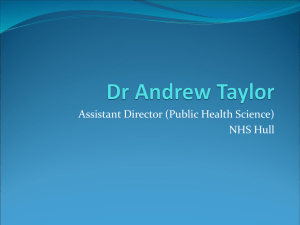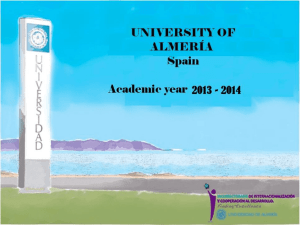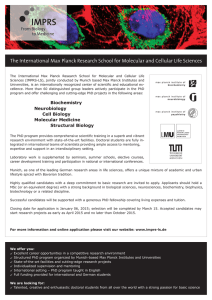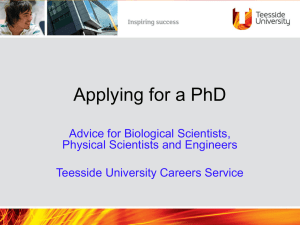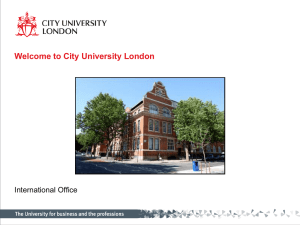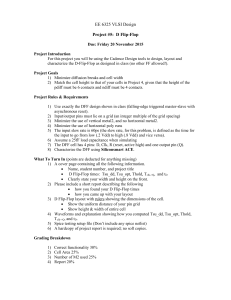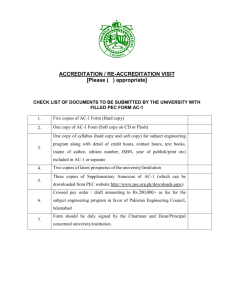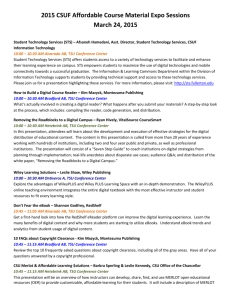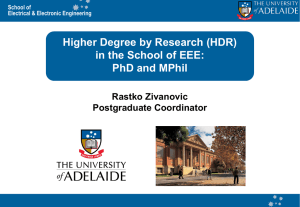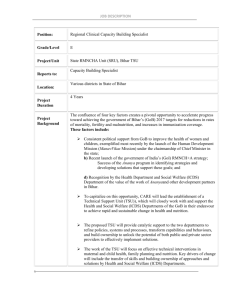PowerPoint
advertisement
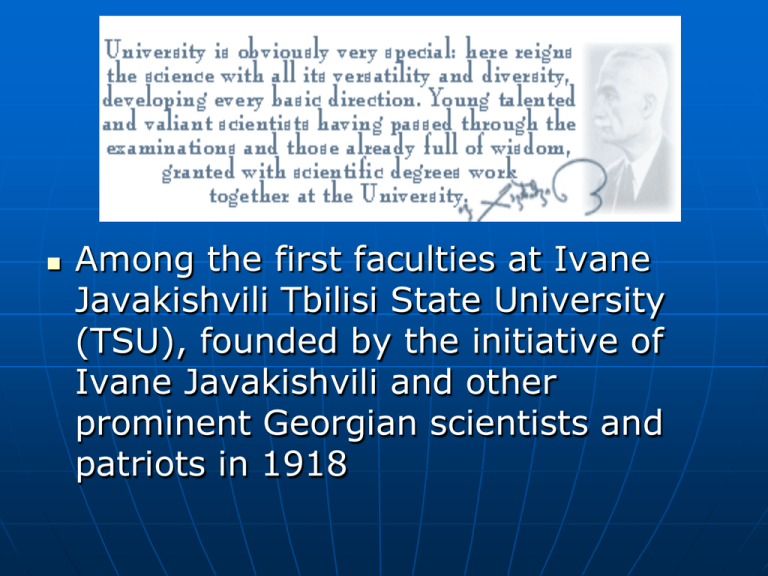
Among the first faculties at Ivane Javakishvili Tbilisi State University (TSU), founded by the initiative of Ivane Javakishvili and other prominent Georgian scientists and patriots in 1918 Undergraduate education In 1930 the Faculty of Medicine was separated from the TSU upon the decision of the state and continued its activity independently as State Medical Institute The return of higher medical education to the university became possible merely in 1994 when Faculty of Medicine in TSU was re-established Undergraduate education Students of the Faculty Medicine acquire specialties: Medicine (MD degree) Dentistry (DDM degree); Occupational therapy (Bachelor’s degree) In total up to 850 students enrolled in all programs. Postgraduate education Residency Master’s programs (public health, epidemiology, biomedical sciences - jointly with the faculty of exact and natural sciences) PhD Challenges Achievements in technology and medicine Bologna process Needs and expectation Medical Education Reforms in health care system Legislation on high Education WHO,WFME, EU requirements in medical education Starting point (2006) - self-evaluation concerning the following aspects: Mission and goals of the faculty Curriculum development Students’ evaluation Students Academic staff Program evaluation Administration and management Postgraduate education Results of the self-evaluation Mission and goals of the faculty have not been established Curriculum inadequate – competencies not clear, mission of curricula and courses not clear Students’ evaluation does not meet standards Students no policy Academic staff week Program evaluation does not exist ; Administration and , management weak, low level of autonomy Postgraduate education Not systematic Self-evaluation (SWOT analysis) Strengths Readiness to reform Problems identified Additional obstacles: Deficit of time for reforms Limited finances Positive factors: Legal framework Vast experience of developed countries and availability of information University environment Assistance and interest of foreign partners New strategic plan - main directions New curricula Development of the structure and system of the faculty/department Development of new, modern and effective approaches and methods of teaching MD Program Duration - 6 years, total number of credits- 360 ECTS (medicine) Dentistry (DDM) – 5 years, 300 ECTS credits Structure of the academic program: Basic biomedical sciences Behavioral sciences Social sciences Clinical sciences Professional development modules Practical placement Reform outline (undergraduate education) First 3 years – basic disciplines (anatomy, histology, physiology, etc) Last 3 years clinical clerkships Discipline-based approach Reform – switching to integrative (system-based) approach Integration of clinical studies to basic medical education in first 3 years Systems: nervous, cardiovascular, gastro-intestinal, etc. Modern teaching methods (passive teaching → active learning, PBL, case studies) Development of information technologies and their active use in teaching and learning process (e-learning, etc) Introducing OSCE Elective disciplines New curricula development (learning objectives/learning outcomes) Undergraduate education Switching to integrative approach Clinical Disciplines Basic Clinical DiscipliDisciplines nes Basic Disciplines 1 2 3 4 5 6 1 years 2 3 4 5 6 Teaching and learning methods Lecture Interactive seminars Problem based learning Case study /role playng Simulation Assessment methods Testing Essay Presentation Exam Evaluation clinical skills Challenges in postgraduate education – PhD programs PhD regulation/statute of the TSU faculty of medicine fits to European standards The PhD student must acquire 180 ECTS credits Average length of studies - 3 years Both research and educational components Learning components - 1/3 (60 credits) Research component - 2/3 (120 credits) Educational part of the program Helps to overcome field-specific and methodological sophistication and includes: PBL course in English for PhD students in medicine - the pilot project in TSU Academic writing in biomedicine Modern research methods in general Modern research methods in the field Research management Supervisor – Prof. Zaal Kokaia (Lund University, Sweden) Mandatory prerequisites to the PhD thesis defense Fulfilling both scientific and educational parts (180 credits) Three scientific publications reflecting results of the research At least one of the 3 papers must be published in an international peer-reviewed journal with an impact factor. Faculty of Medicine encourages joint doctoral programs Joint PhD program with the Munich Technical University in surgery is running Joint PhD program with any of American universities is very welcomed! Priority areas for collaboration Involvement of international experts (including Georgian physicians and academics practicing abroad) in undergraduate and postgraduate education including CME/CPD (short- and longterm visits) Exchange of students, residents, young faculty members Elaboration of joint modules to be implemented in curriculum Focus on modern teaching methods Priority areas for collaboration Development of simulation laboratories and virtual teaching Further development of distance learning and elearning Telemedicine Enhancing specific language skills among students (English as international scientific language) – teaching in English Thank you!
